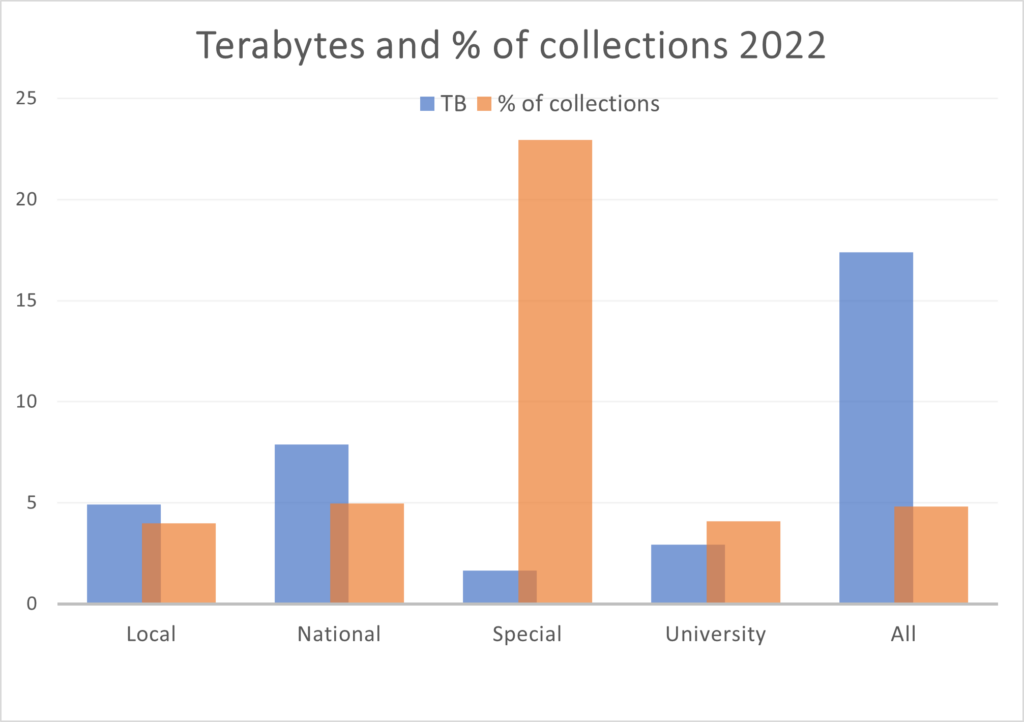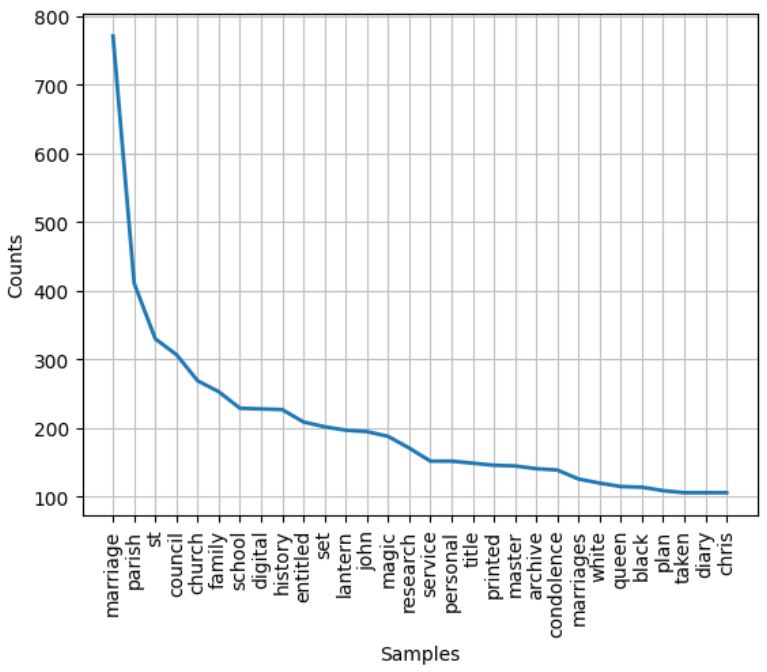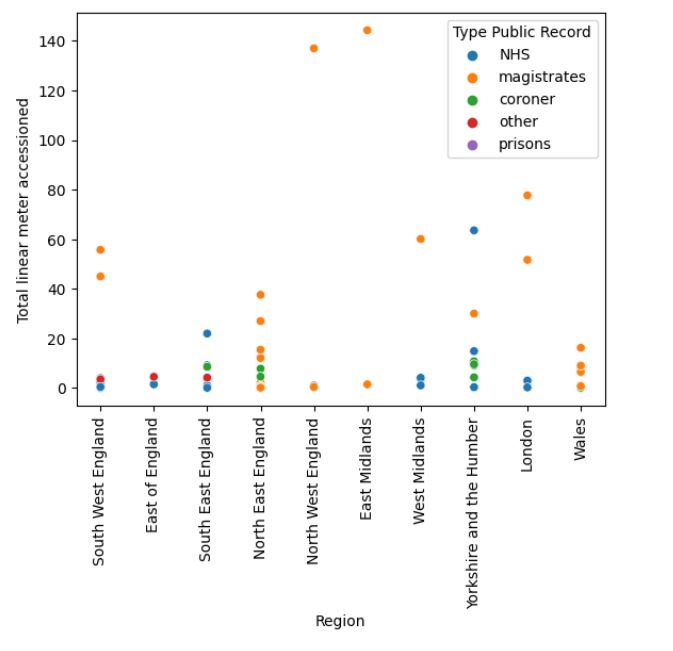Main section
Image above: The Grange Centre for People with Disabilities (formerly The School Of Stitchery And Lace), Bookham
Image credit: Surrey History Centre (ref: 10343)
Click on the headings below to read our analysis of the 2022 Accessions to Repositories survey data.
Tabs Navigation
Tabs
Digital
The volume of digital records accessioned, and the proportion of total collections varied considerably by type of archives. National archives collected the largest volume of digital records – over 7TB. For national, local and university archives, digital records made up approximately 4% of records collected. And while specialist archives accessioned the lowest volume of digital material (1.6TB), these made up over 22% of their collections overall.
In what appears to be an upward trend, overall, 17TB of digital material was accessioned across 705 collections. However, the median size of a digital collection was 0.072 GB. A small number of repositories tend to accession a large volume of digital records, with the majority accessioning very small or no digital collections. The largest digital collection reported was 7.47TB, accessioned by the Public Record Office of Northern Ireland (PRONI), consisting of digitised copies of film and tape within the UTV Ulster Television archive, c1959-2018 (ref D4677).
Diversity
While the Accessions Report for 2022 showcases remarkable growth and diversity in collections, it also reveals a critical area for improvement – diversity in collecting practices. In terms of gender representation for example, a persistent imbalance remains, with an approximate 70:30 male-to-female ratio in use of personal pronouns across the data. This suggests collecting practices remain heavily skewed along gender lines. Additionally, assessment of keywords in the data reveals that terms associated with minority groups remain notably underrepresented, often even mirroring a majority perspective.
However, it is possible that these findings might not fully encapsulate the depth of inclusivity in collecting practices, as many records lack explicit labels related to certain groups or individuals. Yet, the analysis of the data suggests an overall need for greater inclusivity and diversity in archival collections, to ensure that the record truly reflects the richness of our society.
Keywords
The usual keywords top the list – parish, council, church, and, like last year, there is still a high volume of marriage registers. But if we take the top 20 terms, there are some more unusual key words in the list. This includes Lantern, which relates to a large item listed collection of Lantern Slides/Magic Lanterns from the National Science and Media Museum. These are mostly ‘life model’ slides meaning that during the manufacturing process they used real people photographed in a succession of poses to create a play. The terms Set and Entitled also relate to descriptions of Lantern Slides; these are usually described with similar wording. Title appears over 150 times and refers to title deeds.
The appearance of Master as a top term isn’t ominous but refers to Betacam or other master tapes – and is also from a significant item listed collection, this time from the National Railway Museum. Queen relates to condolence books for Queen Elizabeth II following her death in Sept 2022. Several of the more unusual top terms come from large item-listed collections, which produce anomalies in the data. But the reference to the Queen relates to many archives collecting material on current events.
Public Records
96 collections of public records, accessioned by 42 archives, were eligible for New Burdens Funding in 2022. Since the scheme started in 2015, 94 places of deposit (PoDs) have benefited from New Burdens funding, with 22 not reporting any eligible public records.
There are significant regional differences in accessions of Public Records. The South East had the most PoDs collecting public records in 2022, but PoDs in Yorkshire collected the largest amount of records by linear metre. Despite having the fewest number of archives reporting public record accessions, PoDs in London and the East Midlands collected among the largest volumes of records. There is little correlation between the number of actively collecting PoDs in a region and volume of public records accessioned.
Magistrate court records were the largest type of public record collected, proportionally accounting for more than 70% of public record accessions. This was followed by NHS records, which accounted for 14%. However, this is not evenly spread across regions, with PoDs in the East Midlands and North West accessioning the largest volumes of magistrate court records and those in the South East or East accessioning a very small amount or none at all. Similarly, archives in Yorkshire and the South East accessioned the most NHS records while those in the North West and East Midlands did not collect any records from hospitals.


